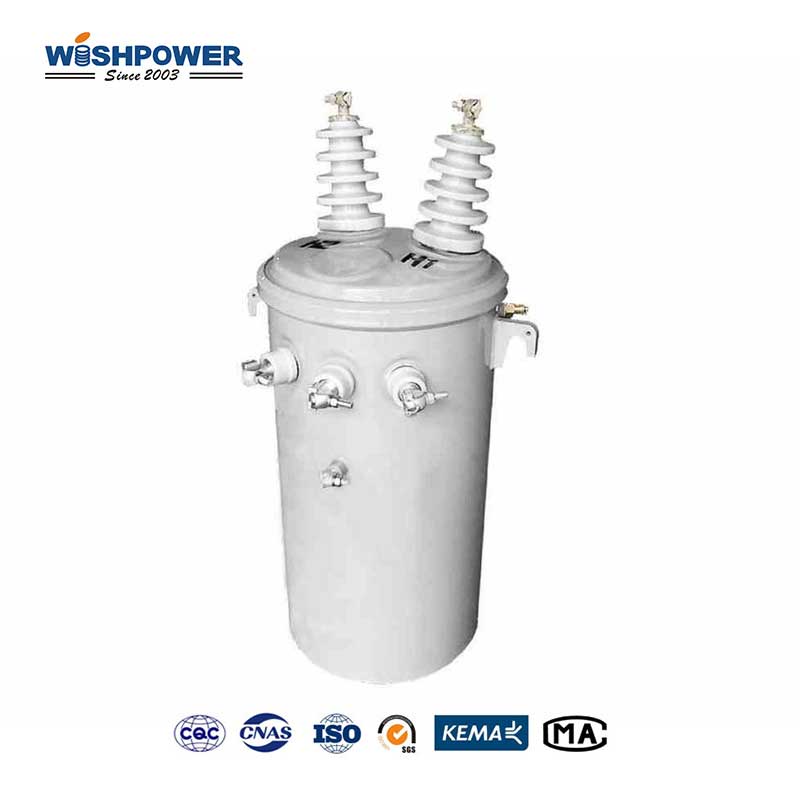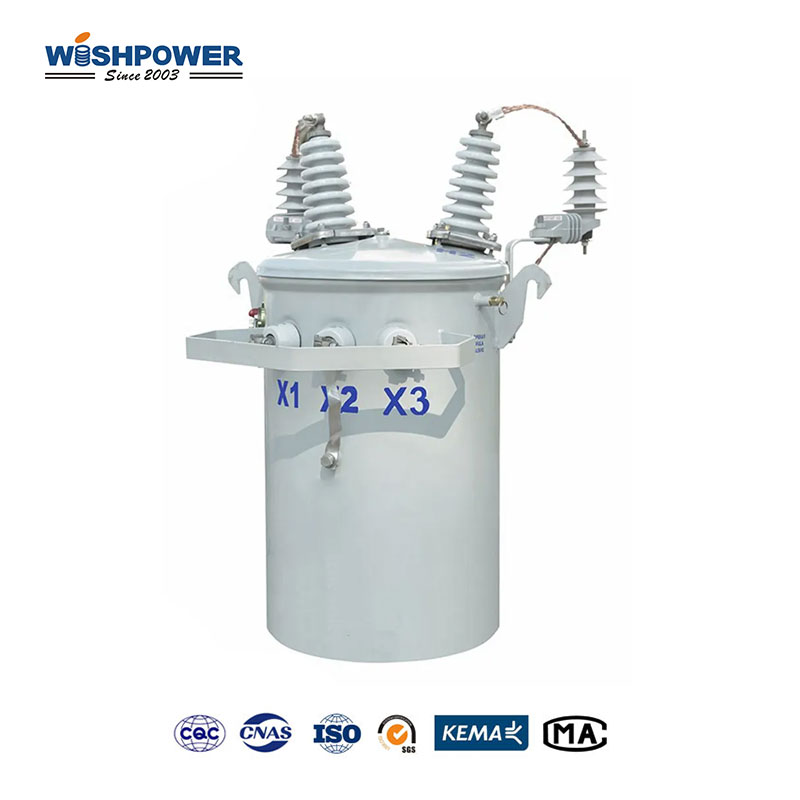How many kVA is a pole-mounted transformer?
Pole-mounted transformers are required components of the power distribution networks for the residential, rural, and light commercial areas. They are meant to reduce high-voltage electricity from distribution lines to lower voltage for end-user applications.

Typical kVA Ratings of Pole-mounted Transformers
10 kVA to 50 kVA: Rural areas and units use these transformers to supply only one phase of power to small residential units. For areas of low population density or low levels of energy consumption, they are ideal.
75 kVA to 167 kVA: This type of category of medium-duty transformers is suitable for suburban areas or small commercial establishments. They provide enough capacity to power multiple homes or small businesses.
200 kVA to 500 kVA: Generally, these high-capacity transformers are used in urban areas, industrial facilities, or large commercial centers where the energy consumption is high and we may like to use three-phase power.
The rating needed for the kVA that a pole-mounted transformer will need to serve depends on the load to be served plus a safety margin for peak demands.
Applications of Pole-mounted Transformers
Residential Power Distributing
The power to residential areas is commonly provided by pole-mounted transformers. Single-phase transformers with kVA ratings between 10 and 50 are common in these environments. They give you reliable power to run household appliances, lighting, and heating systems.
Rural Electrification
Pole-mounted transformers are necessary to bring power to rural and remote areas. Because of their lightweight and compact design, they are easily placed on utility poles and do not require a great deal of ground infrastructure. Rural applications tend to be in the order of 10 to 100 kVA.
Commercial Uses
Medium kVA-rated pole-mounted transformers (75 kVA – 167 kVA) are commonly used by small businesses and commercial facilities. These transformers can power store, restaurant, and office energy needs without any breaks in the supply of electricity.
Industrial Applications
Higher kVA Transformers (200 to 500 kVA) are used in industrial setups for machinery, equipment, and high-power systems. Such transformers may also be of a three-phase configuration to handle the larger loads which are characteristic of industrial operations.
Advantages of Pole-Mounted Transformers
Compact and Space Saving design
Pole-mounted transformers are designed to be mounted on utility poles so that they do not need ground space and simplify the installation in crowded areas. They are especially well suited for urban and suburban repetitive environments.
Cost-Effectiveness
Installing and maintaining pole-mounted transformers is cheaper than ground-mounted transformers. Designers make them small, and efficient, reducing overall operating costs and making them a practical choice for many applications.
Ease of Maintenance
The pole-mounted transformers are relatively simple to maintain. Because they are high on the pole, they are more accessible to utility workers, reducing downtime of repairs or inspections.
Flexibility
These can be pole-mounted and are perfectly suitable to accommodate a wide variety of voltage and load requirements. The ability to operate in this flexible mode allows these disks to serve many applications from rural electrification to industrial power distribution.
Choose the kVA Rating That Fits Your Needs
Load Calculation: Find out the total load that the transformer has to provide for current as well as its future energy needs.
Voltage Compatibility: Both the distribution network and end users must be satisfied with the input and output voltage ranges of the transformer.
Safety Margin: Choose a transformer having a kVA rating, which includes a safety margin to deal with peaks and sudden load surges.
Consult an Expert: The appropriate transformer size for your application has to be worked with a qualified electrical engineer or utility provider.
How many kVA is a pole-mounted transformer?
Pole-mount transformer’s kVA rating will be dependent on the use it is loaded to, its load capacity as well as conditions of the environment. These transformers are generally rated at 10 kVA to 500 kVA and are a good, application versatile, type of transformer for residential, rural, commercial, and/or industrial power distribution. Knowledge about exactly what kind of power your equipment requires and talking to an electric connection pro will go a long way in making sure you choose the appropriate transformer that will provide secure, helpful power for years.
If you have different opinions or want to know more, please leave a message on the website or contact us directly at info@wishpower.net

















